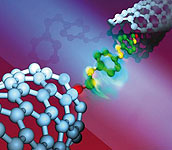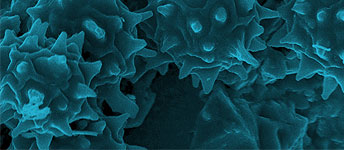The main research activities of our group concern concepts, quantitative methods and experiments to understand and master true nanoscale phenomena. Nanomechanics and nanoelectronics are key aspects of our fundamental investigations aimed at developing nonconventional strategies to produce and exploit new devices and materials.
Innovative Biosensors:
Working on new sensor concepts based on silicon-nanowires, our aim is to gain a detailed understanding of different nano and microscopic physical, chemical and biological aspects e.g., charge carrier migration in nano-structures, properties of inorganic-biological interfaces, and the investigation of receptor-analyte interactions.
Environmental Nanotechnology:
Biomaterials and multifunctional nanoparticles are developed that enable novel and cost-effective environmental technologies e.g., bio-functionalized nanomaterials that facilitate remediation of contaminated media.
Molecular Manipulation and Nanomachines:
Scanning probe microscopy is used to image and manipulate molecular structures providing deeper insight into electronic and mechanical properties of single (bio)molecules and molecular aggregates. In parallel, our modeling research line encompasses a broad spectrum of length and complexity scales. Simulations spanning atomistic descriptions to continuous techniques can be applied to molecular (bio)nanoelectronics, multiscale modeling, and the statistical mechanics of material properties.




